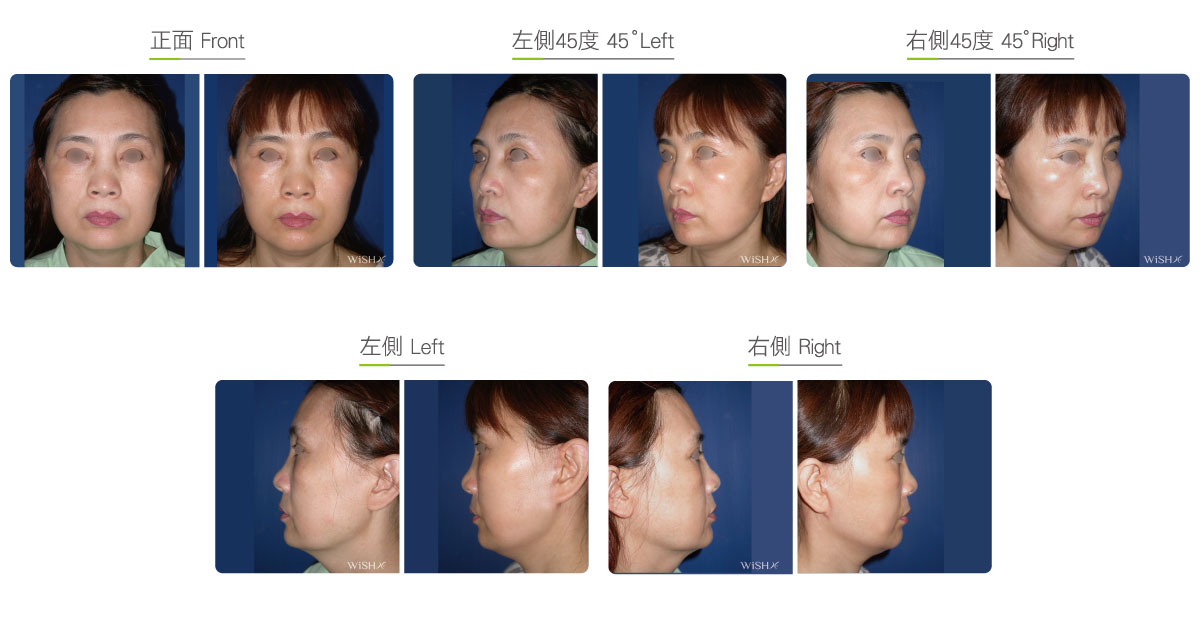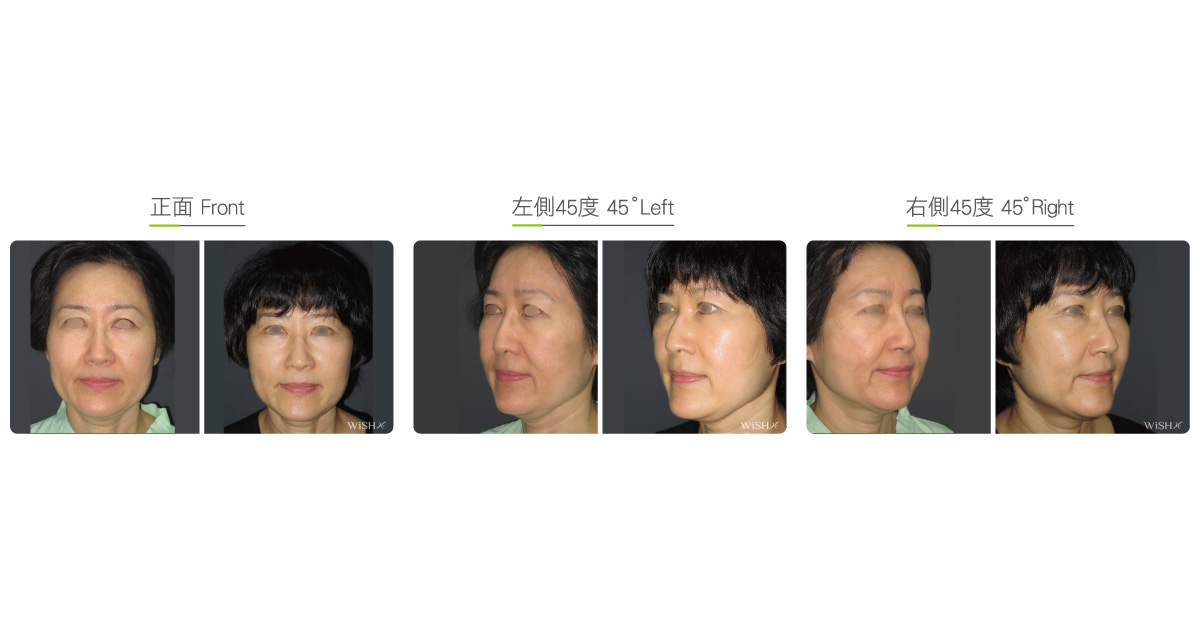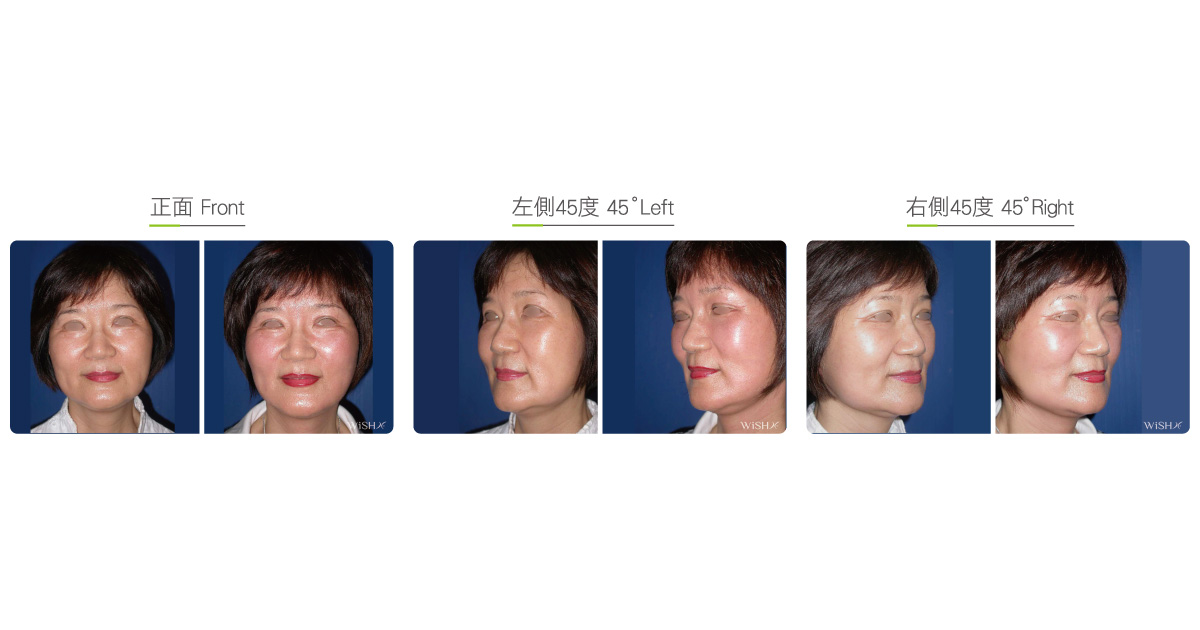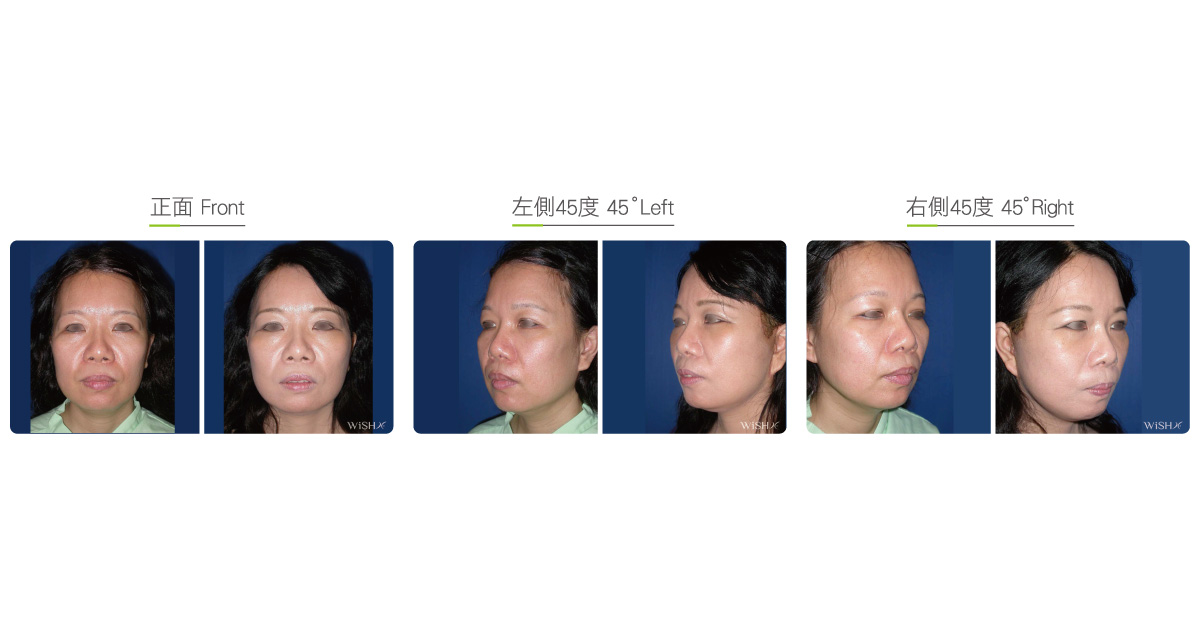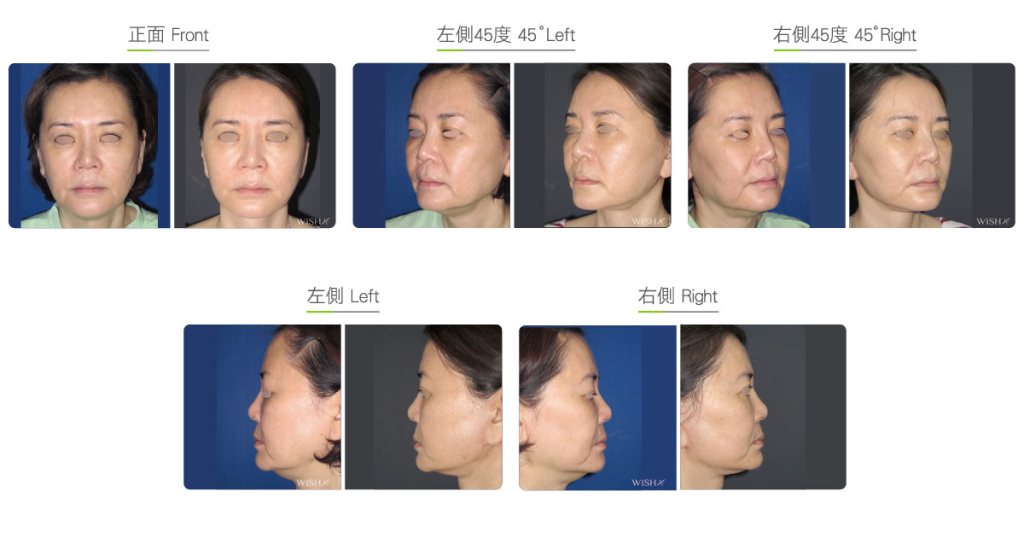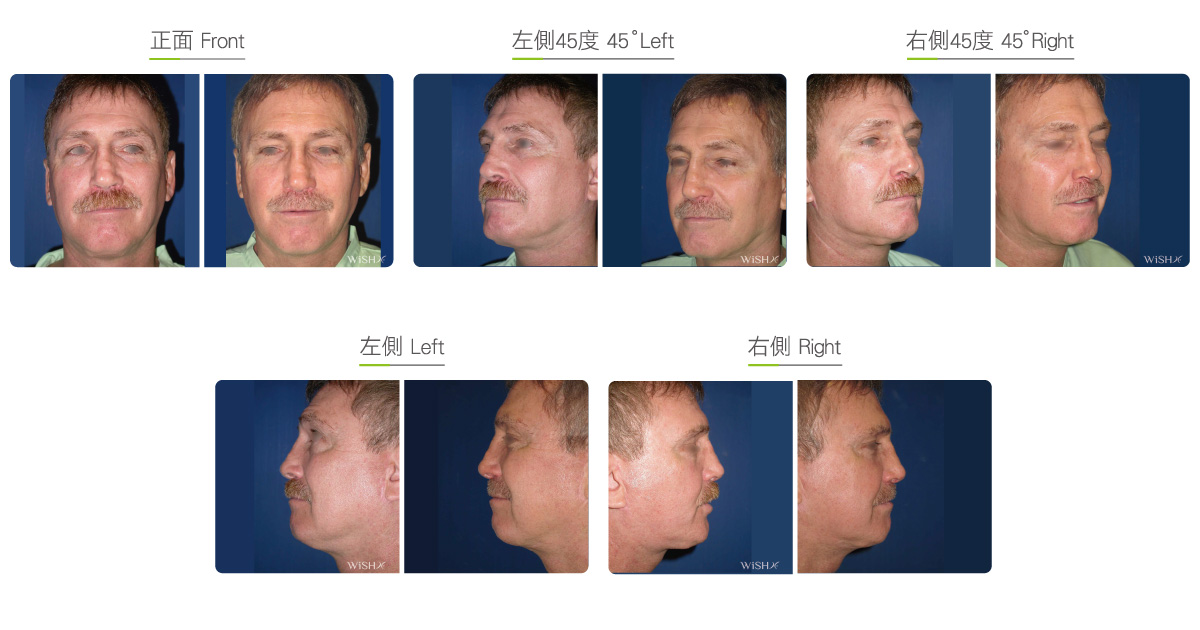MACS Facelift
Minimal access cranial suspension (MACS) is a short scar lift, which is refined from the traditional SMAS (multi-layer) facelift. It is mainly suitable for patients with midface sagging or circumoral fat laxity but without severe aging and could achieve similar results as a traditional facelift but without requiring a relatively long recovery period. The surgery is performed by making an incision from the anterior margin of the temple to the preauricular area and then around to the retroauricular area. It does not need to extend to the occipital hairline. Dr. Chuang first conducts limited dissection of the skin and superficial fascia via the incision and after the partial removal of the fascia tissues, may stretch the fascia flap from the anterior margin of the dissection area (near the nasolabial fold) posterosuperiorly to the preauricular area and suture concentrically to fixate on the deep fascia. In this way, the distal skin combined with the nasolabial folds and the circumoral fat is tightened toward the rear of the cheek. The lift direction and number of threads can be adjusted depending on the degree of skin laxity. Repetitive purse-strings sutures may also be performed 2-3 times in the same area to enhance the stability and result of the surgery. After the superficial fascia is suspended and fixed, Dr. Chuang will remove the loose skin and close the wound.
Compared with the traditional or deep plane SMAS facelift, this surgery is relatively simple and does not require wide dissection of the skin flap and myofascial plane, which greatly shortens the operating time and recovery period. Besides, because there is no risk of facial nerve injury, it is suitable for middle-aged or busy, hardworking patients with an initial aging cheek appearance. However, the drawback is that the results may not last as long as those by the SMAS facelift (approximately 5–6 years on average), and it may not distinctly lift and improve neck skin or neck wrinkles. Therefore, patients should decide upon this procedure after evaluating whether their objective indications and subjective requirements are identical.
Surgical conditions
Duration
- Type of anesthesia: IV sedation + local anesthesia
- Type of incision: A long incision from the scalp posterior to the temple, extending along the preauricular skin to behind the earlobe
- Recovery: 5–7 days
- Removal of sutures: 7–10 days
General instructions
No food and water on the day of surgery
Anticoagulants, if any, should be suspended for 1 week.
- Rubbing or pressing the incisions on the forehead and scalp should be avoided for 1 month postoperatively.
- Hair dying or perming should be avoided for 2 months postoperatively to prevent unwanted irritation or allergy.
- Scar care should be continued for 3 months postoperatively.
Ideal candidates
- Patients with early or moderate cheek and jawline sagging.
- Middle-aged, 30–40-year-old patients with deep nasolabial folds and marionette wrinkles.
- Patients unwilling to accept the risks or longer recovery period of traditional SMAS facelift.
- Patients who have already undergone a thread embedding or Quill thread lift but show no significant results.
- Patients who have already received Ulthera or Thermage therapy without obvious results.
Potential complications
- Scar hypertrophy
- Temporary facial skin stiffness or numbness
- Hematoma, and poor wound healing
Surgical advantages
-
Compared with SMAS facelift, the surgical area is smaller and the postoperative recovery is quicker.
-
Shorter incision than that of SMAS facelift, which makes postoperative care easier.
-
Surgical results are instant and obvious.
-
Able to concurrently improve midface cheek, nasolabial folds, marionette wrinkles, and jawline laxity.
-
No risk of nerve or major vessel injury.
Surgical drawbacks
-
Not suitable to patients with severe facial skin laxity or cheek sagging.
-
The improvement of nasolabial folds and marionette wrinkles is not as good as that by SMAS facelift.
-
Surgical results may not last as long as those of a SMAS facelift.
-
The preauricular scar may take time to fade.
-
Unable to improve neck laxity or wrinkles.
Possible procedures in conjunction
Comparison of various facelift surgeries
| Temporal midface lift | MACS facelift | Deep plane SMAS facelift | |
|---|---|---|---|
| Ideal candidates | Patients with mild midface sagging | Patients with moderate midface sagging combined with deep nasolabial fold or jawline laxity | Patients with severe mid and low face sagging, deep nasolabial folds, and marionette wrinkles or combined with neck laxity |
| Age | 30–50 years old | 30–50 years old | Above 50 years old |
| Type of anesthesia | IV sedation + local anesthesia | IV sedation + local anesthesia | IV sedation + local anesthesia or general aesthesia |
| Surgical incision | Approximately 2 cm in the scalp | Approximately 8–10 cm before the ear and around the earlobe | Approximately 15–20 cm from the scalp along with the preauricular area to the retroauricular hairline |
| Range of dissection | Medial to the scalp hairline | About preauricular 3–5 cm | Approximately 5–8 cm before the ear combined with the neck |
| Dissection of plane | Superficial | Superficial | Deep |
| Removal of skin | In the scalp | Facial preauricular skin | Facial preauricular and neck skin |
| Improvement of nasolabial folds | Approximately 50% | Approximately 60%–70% | Over 70%–80% |
| Neck suspension | No | No | Yes |
| Recovery period | 1–2 days | 5–7 days | 10–14 days |
| Nerve injury | No | No | Possible |
| Scar recovery | No | 6 months | 6-12months |
| Loss of scalp hair | Possible | No | Few |
| Facial numbness | No | Mild | Temporarily obvious |
| Persistence of surgical result | Approximately 3–5 years | 6–8 years | 8–10 years |
| Repetitiveness of the surgery | Yes | Yes | Yes |

